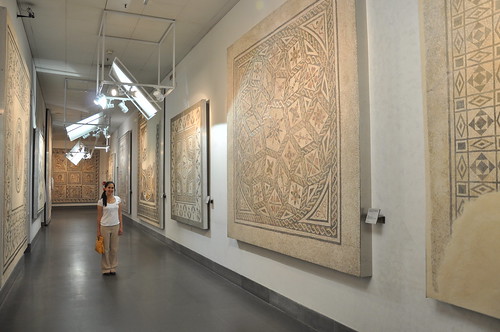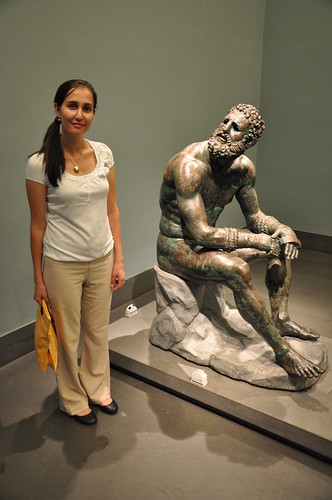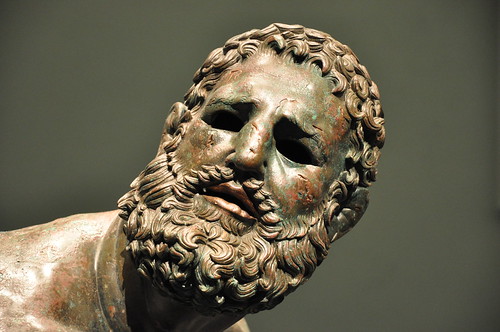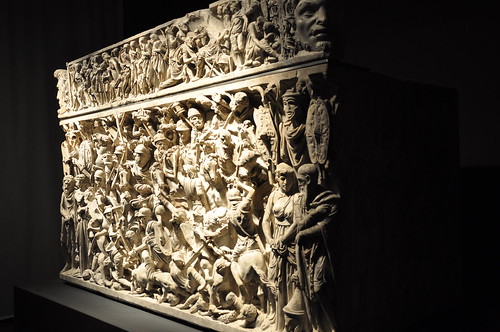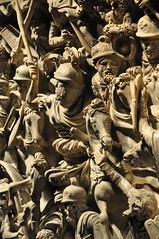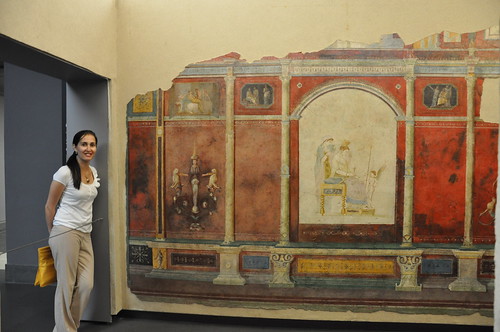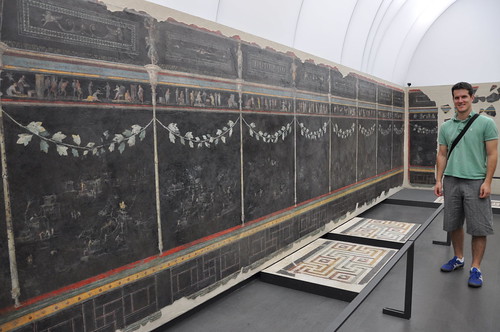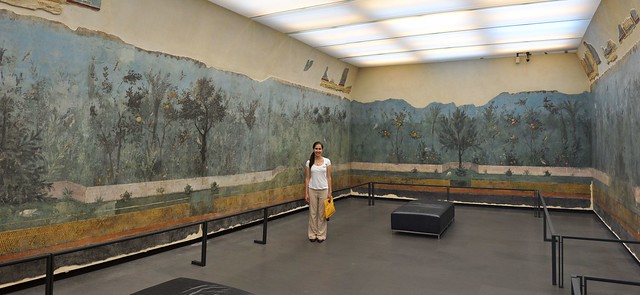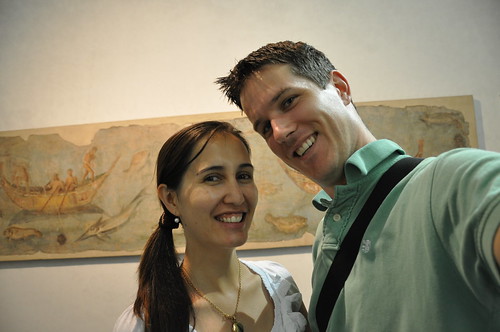We heard about the Palazzo Massimo from the Revealed Rome blog and it looked pretty stunning. And then we found out that a bunch of Roman museums are open and free on the last Tuesday of the month. It seemed like a great way to see an amazing museum for free.
The museum is quite large, but the weird thing about going on a Tuesday night? We were sharing the museum with 6 other people, tops. How great is that! The ground floor was full of statues of some famous Romans from history (Octavius, Hadrian, Marcus Aurelius…). But, there is also the famous statue of ‘The Boxer at Rest’ – a bronze statue of a boxer after he (lost?) a fight. His posture and expression certainly makes it look like he lost.
What an expression. He looks so exhausted. All his boxing injuries though are on his face, because apparently Roman boxing was only about hitting the face, not the body.
The first floor had more statues, but also had a large array of sarcophagi, which I didn’t realize the Romans actually did. But in the first and second centuries, they were very popular. In a room of its own was a phenomenal example – the Sarcophagus of Portonaccio.
The sarcophagus is mostly taken up by a ferocious battle scene centered on a charging Roman horseman. The sarcophagus hadn’t been finished though, as the faces hadn’t been completed on the key figures. On either side of the battle are the morose defeated, a warning to those who rebel against the Roman empire. The depth of the work was so impressive, greatly helped by the dramatic lighting. Really amazing work.
But the real reason we wanted to go to this museum and the total sell point of the place was on the second floor – a massive collection of frescoes.
This fresco above was a decorated bedchamber from the Villa of Farnesina, a residence of the Augustan age (30-20 BC). All the frescoes from the villa were salvaged from Travestere (a suburb of Rome) in 1879. The fresco below was a dining room. The black walls have delicate white sketches on them though along the strip just above are depictions of justice being delivered and served.
However, the highlight of the frescoes on display was from Livia’s suburban villa (she was the wife of Augustus who also had a home on the Palatine). All 4 walls were of the beautiful Painted Garden. It is the most ancient example of continuous garden painting (30 – 20 BC) and presents a variety of plants and birds rendered in a naturalistic way. The paint was in such great condition and the detail was so beautiful. What a way to decorate your home!
This museum was amazing. It had such interesting items and most things had English descriptions, making it very accessible for tourists. A top recommendation for Rome, I say!
More Rome posts to come. Until then…
